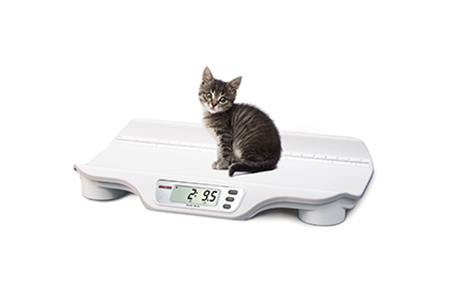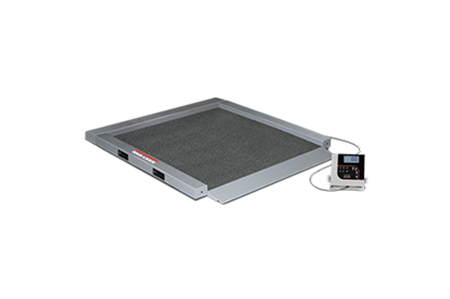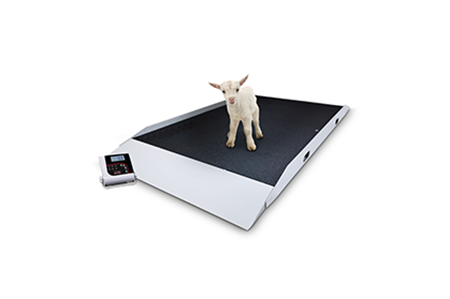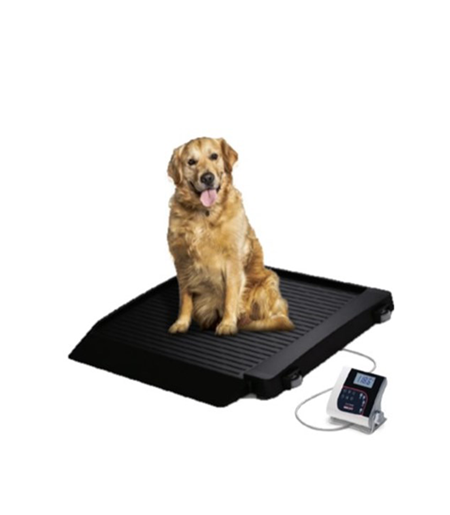Is the website displaying in the correct language? Please confirm or select a different language.
Your region has been set automatically. Please confirm or select a different region.

Key Features of Animal Scales
Preparing to purchase an animal scale can feel overwhelming—the options may seem endless as you consider different models and the benefits of each type of scale. Your animal scale distributor will be able to help you choose a great option, but knowing what to look for when purchasing an animal scale will help you feel more confident in your selection.
Small Animal Scale Capacity and Resolution
The first thing to consider when you begin your search for an animal scale is the capacity you need. We recommend choosing a scale with a capacity higher than your heaviest patient’s weight. For example, a scale with a 1,000-pound capacity will easily and accurately weigh medium or large companion animals, such as dogs, goats and sheep.
Smaller animals, such as cats, rabbits and hamsters, should be weighed on scales with a smaller capacity. Often a 40-pound capacity scale will have the resolution necessary to display a precise weight for small animals. A scale’s resolution is the smallest change in weight it can detect and display. A change of a few ounces will mean a lot more when weighing a rabbit than when weighing a large dog, which is why it’s important to have a variety of scales for all your patients.
Small Animal Scale Size and Material
Your animal scale’s weighing platform size can be closely related to the capacity. Typically, higher capacity scales have a larger weighing platform. You should carefully review the dimensions to ensure the platform will fit in your facility with enough space for you and your patients to comfortably move around it.
The material your animal scale is constructed with is also an important factor. It must withstand your cleaning procedures and be durable enough to withstand the unplanned events of animal care. The scale’s material and construction should protect sensitive electronics from any spilled fluids, claws or hooves, or heavy, shock impacts.
Additionally, the scale platform should be comfortable for your patients to stand or sit on. You may need to consider a weighing platform with ramps or anti-slip and noise-cancelling mats to help even anxious patients remain calm while you record their weight.
Small Animal Scale Functionality and Use
While ensuring patient comfort is the top priority when selecting equipment, the animal scale you choose also needs to be easy for your staff to use. Functions such as weight recall, unit of measure locking and tare can simplify weighing procedures.
Weight recall allows staff to display the patient’s weight after they have moved off the scale. Locking units of measure ensures the scale isn’t unintentionally changed from pounds to kilograms, keeping weight records accurate. The tare function of a scale allows staff to place a blanket or holding container on the scale, tare that weight so the scale displays zero, and then weigh a patient wrapped in the blanket or placed in the container and record an accurate weight.
Consider searching for scales with movement compensation technology. Many animals will be nervous and won’t stand still while they’re being weighed, which could cause unsteady or false weight readings. Scales with movement compensation technology automatically adjust for patient movement to ensure the weight you’re recording is accurate, even if your patient is shaking or taking nervous steps.
Rice Lake Weighing Systems offers a variety of animal scales and our expert staff is available to assist with any questions. We also work with an extensive distributor network to ensure you have reliable on-site support for your scales.



 My Account
My Account






